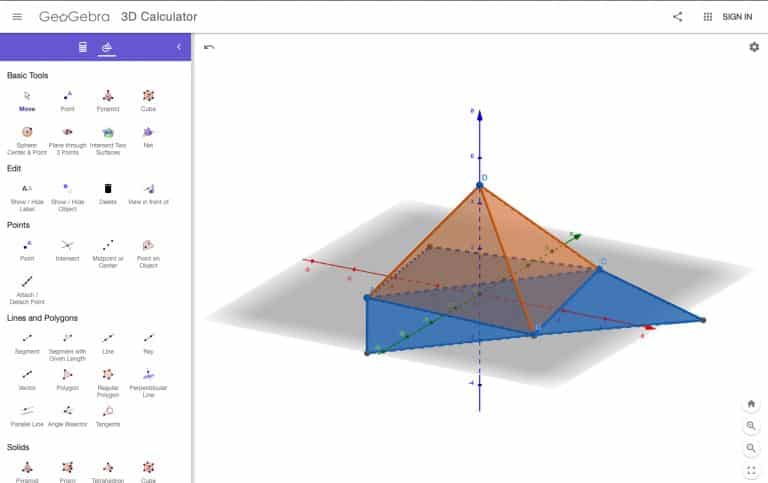GeoGebra is free, open-source, and multi-platform software that combines dynamic geometry, algebra, calculus, spreadsheet, graphing, and statistics in one easy-to-use package. The name, GeoGebra, is derived from Geometry and Algebra.
Any object in GeoGebra has dual representation, geometric and algebraic. One can create geometric constructions and objects either interactively in the Graphics View, or by typing the appropriate commands in the input field of the Input bar.
The Objects so constructed can be manipulated and explored either interactively in the Graphics View or by changing the parameters in the Algebra View Section. Moving the objects in the Graphics View changes the expressions in the Algebra View accordingly.
Alternatively, editing the expressions in the Algebra View results in the respective change in the Graphics View. This software can be used both as a teaching tool to explore and discover mathematical properties and as a tool for the creation of interactive teaching materials, e.g., dynamic web pages.
Contents
Advantages of Using GeoGebra for Mathematical Purposes:
- Any geometric object in GeoGebra has dual representation, geometric and algebraic. Hence, one can create, manipulate and explore such objects either interactively in the Graphics View using geometric tools, or by changing the parameters in the Algebraic View.
- In addition to the geometric tools, GeoGebra offers algebraic inputs and commands. Every tool has a matching command.
- It can be used for learning and teaching at all levels of education, from middle school to University, and in classrooms, and at home.
- A GeoGebra file can be converted into an interactive HTML file. Teachers can use GeoGebra as an authoring tool to create interactive worksheets.
- With Unicode support, GeoGebra is provided in more than 45 languages.
Main Parts of GeoGebra Window:
1) Algebra View:
The Algebra View lists the algebraic representation of all the mathematical objects created in the Graphics View or by commands typed in the Input bar. It displays the label of an object and its value, coordinates, or equation.
2) Graphics View:
It is the main work area of the GeoGebra window in which geometric objects such as points, lines, circles, etc., can be constructed with the mouse using the construction tools available in the Toolbar. The Graphics View displays the objects, their labels, and, optionally, their values. The Graphics View may include the X-Y axes and grid.
3) Input bar:
It is located at the bottom of the GeoGebra window. it contains a text box with the label Input in which algebraic inputs e.g., values, coordinates, equations, etc,. as well as commands that can be typed. There is also a drop-down list box of all the GeoGebra commands.
4) Toolbar:
It is divided into toolboxes, each of which contains one or more Tools. Every icon in the Toolbar represents a toolbox that contains a selection of similar construction tools.
Two Uses of GeoGebra in Algebra:
- To draw the graph of a given equation.
- Solve simultaneous equations graphically.
Two Uses of GeoGebra in Geometry:
- To draw objects of plane geometry, e.g., points, lines, circles, etc.
- To verify and explore the proofs of mathematical theorems and other theorems of plane geometry.
Two Uses of GeoGebra in Statistics:
- To find the mean, median, and mode of quantitative data collected from surveys.
- To draw histograms of the above quantitative data.
Conclusion
GeoGebra is a good mathematical software for students of High-School and Universities and also for people from the Mathematical profession. GeoGebra software is capable of enhancing students’ conceptual and procedural knowledge, which at the same time significantly improves students’ achievement.

